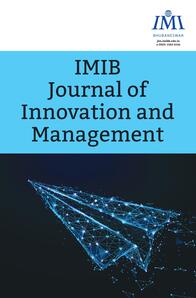
1Department of Business Administration, Ravenshaw University, Cuttack, Odisha, India
Creative Commons Non Commercial CC BY-NC: This article is distributed under the terms of the Creative Commons Attribution-NonCommercial 4.0 License (http://www.creativecommons.org/licenses/by-nc/4.0/) which permits non-Commercial use, reproduction and distribution of the work without further permission provided the original work is attributed.
Higher education institutions (HEIs) are under growing pressure to raise the standard of education they offer and to be more creative. Institutional accreditation acts as a quality control to make sure that institutions stay true to their mission and continue to benefit students academically. Accreditation has undergone major adjustments. As a per recent changes in higher education, the educational institutions and other bodies are rethinking how to demonstrate academic excellence to students who may not be participating in the traditional collegiate experience. Because of the pandemic, higher education had to quickly switch to a new approach to instruction, delivery, assessment and community engagement. These universities were able to experiment with new degrees of innovation while maintaining a high standard of quality through online and remote learning which justifies the need and motivation for this research. The article begins by outlining the increasingly varied spectrum of higher education stakeholders, including students, academicians and other interested parties, which has given rise to concerns about the quality of education and institution building. The relevance of leadership, governance, institution building and quality assurance in HEIs for accreditation requires properly carrying out its role as discussed in the later part of the article. The article is based on an extensive review of the accreditation system in India and summarises the implication of governance, leadership, quality assurance and institution building for better ratings. As the accreditation system is evolving with time, there lies a scope for future research.
Leadership, governance, higher education institutions, quality assurance, stakeholders, accreditation
Gola, M. M. (2003). Premises to accreditation: A minimum set of accreditation requirements. In Accreditation Models in Higher Education Experiences and Perspectives: ENQA Workshop Reports 3 (pp. 25–31). European Network for Quality Assurance in Higher Education, Helsinki.
National Assessment and Accreditation Council. (2013, June). Manual for self-study report: Affiliated/constituent colleges. http://dcedu.in/wp-content/uploads/2017/08/ssr_naac.pdf
UNESCO. (1998 October 5–8). Vision of the concepts of quality accreditation [Paper presentation]. The UNESCO World Conference of Higher Education (Paris, 1998) and follow-up meetings, GUNI Secretariat, Barcelona.